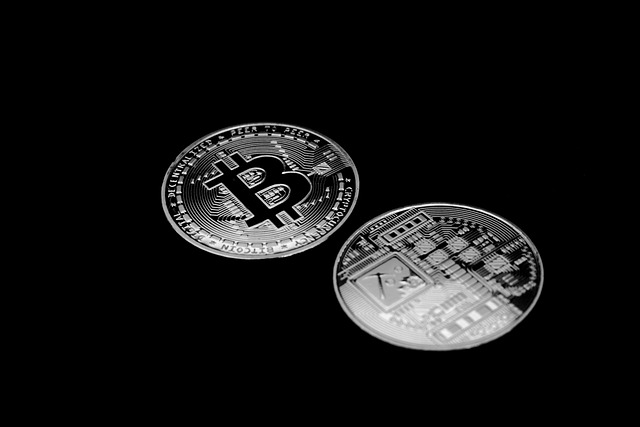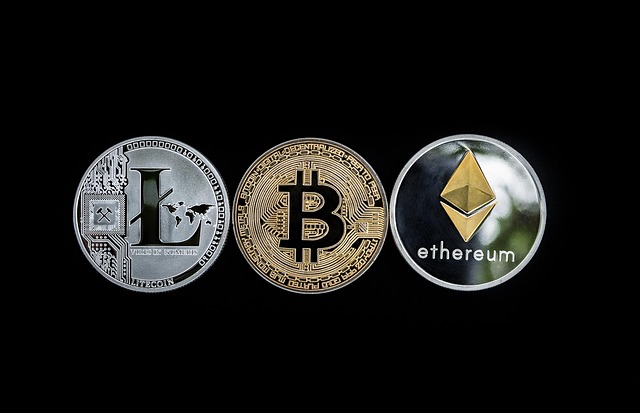Practical Examples of Altcoins in Crypto: Top Types, Uses, and How to Evaluate Them
Author: Jameson Richman Expert
Published On: 2025-10-21
Prepared by Jameson Richman and our team of experts with over a decade of experience in cryptocurrency and digital asset analysis. Learn more about us.
Examples of altcoins in crypto span a wide spectrum—from large-cap smart contract platforms like Ethereum to niche privacy tokens, stablecoins, and memecoins. This article breaks down the most important categories, provides real-world examples, explains what makes each altcoin useful or risky, and gives actionable guidance for researching, trading, and integrating altcoins into a portfolio.

What is an altcoin? A quick primer
The term altcoin refers to any cryptocurrency other than Bitcoin. While Bitcoin remains the largest and most recognized digital asset, altcoins innovate in areas such as smart contracts, low-fee payments, decentralized finance (DeFi), privacy, tokenized assets, and more. For a general overview, see the Wikipedia entry on altcoin.
Why study examples of altcoins in crypto?
Examining concrete examples helps investors and developers understand functional differences, potential use cases, and market dynamics. Altcoins can offer:
- Utility: Native tokens can pay fees, secure networks, or govern protocols.
- Diversification: Exposure to different protocols, consensus mechanisms, and economic models.
- Innovation: New features—like programmable money, cross-chain bridges, or privacy layers.
- Yield opportunities: Staking, liquidity mining, lending, and yield farming.
How this article is organized
We’ll cover altcoins by category, provide notable examples with concise explanations and links to authoritative resources, and finish with practical evaluation criteria, portfolio strategies, security considerations, and further reading (including advanced trading and automation resources).

Top categories and prominent examples of altcoins in crypto
1. Smart contract platforms (Layer 1)
These altcoins support decentralized applications (dApps), decentralized finance (DeFi), and token issuance.
- Ethereum (ETH) — The leading smart contract platform enabling ERC-20 tokens and NFTs. Ethereum transitioned from PoW to PoS (The Merge) to enable staking and reduce energy use. Official overview: Ethereum (Wikipedia).
- Cardano (ADA) — A peer-reviewed, research-driven Layer 1 focused on formal verification and energy-efficient consensus.
- Solana (SOL) — High-throughput, low-latency network designed for fast transaction throughput and inexpensive fees (favored by some DeFi and NFT projects).
- Avalanche (AVAX) — Emphasizes subnets and high performance for financial primitives and dApps.
- Polkadot (DOT) — Interoperability-focused with parachain architecture for specialized chains.
2. Layer 2 solutions and scaling-focused altcoins
Layer 2 networks sit on top of Layer 1 blockchains to increase throughput and lower fees.
- Polygon (MATIC) — Ethereum scaling solution offering sidechains and zk/optimistic rollups.
- Arbitrum (ARB) — Optimistic rollup designed to scale Ethereum while preserving security.
- Optimism (OP) — Another optimistic rollup for faster, cheaper Ethereum transactions.
3. DeFi tokens
DeFi altcoins power decentralized exchanges (DEXs), lending platforms, derivatives, and automated market makers (AMMs).
- Uniswap (UNI) — Governance token for the largest Ethereum-based DEX, Uniswap.
- Aave (AAVE) — Governance and utility token for the Aave lending protocol.
- Compound (COMP) — Token for governance of the Compound lending protocol.
- Chainlink (LINK) — Decentralized oracle network that supplies real-world data to smart contracts.
4. Stablecoins
Stablecoins are altcoins designed to maintain a stable value, often pegged to fiat currencies.
- Tether (USDT) — One of the largest stablecoins by market cap; widely used for trading and liquidity.
- USD Coin (USDC) — A regulated stablecoin issued by Circle and Coinbase with regular attestations.
- DAI — A decentralized, crypto-collateralized stablecoin issued by the MakerDAO protocol.
5. Privacy coins
Privacy-focused altcoins aim to conceal transaction details and user identities.
- Monero (XMR) — Strong privacy through ring signatures and stealth addresses.
- Zcash (ZEC) — Optional privacy using zk-SNARKs to shield transactions.
6. Payment and utility tokens
These altcoins facilitate payments, discounted fees, or ecosystem utility.
- Litecoin (LTC) — Often described as “digital silver” with faster block times than Bitcoin.
- BNB (Binance Coin) — Native token for the Binance ecosystem; used for fee discounts, staking, and more.
7. Memecoins and speculative tokens
Often community-driven, these can have volatile price action and high short-term interest.
- Dogecoin (DOGE) — Originated as a meme but widely used for tipping and community-driven efforts.
- Shiba Inu (SHIB) — Token with a large community and speculative trading volume.
8. NFT, gaming, and metaverse tokens
Tokens backing NFT platforms, blockchain games, and metaverse ecosystems.
- AXS (Axie Infinity) — Governance and utility token for Axie Infinity, a blockchain game with play-to-earn mechanics.
- MANA (Decentraland) — Used in Decentraland for virtual land purchases and governance.
Notable concrete examples with quick profiles
Below are short profiles for some of the most influential altcoins you’ll encounter in crypto markets.
Ethereum (ETH)
Purpose: Smart contracts and dApps.
Consensus: Proof-of-Stake since the Merge.
Key strengths: Largest developer ecosystem, standards like ERC-20/ERC-721, vast DeFi/NFT activity.
Risks: Scalability and fee variability (being addressed by Layer 2s and sharding roadmap).
Chainlink (LINK)
Purpose: Decentralized oracles providing off-chain data to smart contracts.
Why it matters: Smart contracts require reliable external data; Chainlink is widely integrated across DeFi projects.
Cardano (ADA)
Purpose: Research-driven blockchain for dApps and smart contracts.
Why it matters: Focus on formal methods and peer-reviewed development; ecosystem growth is steady but slower than Ethereum.
Polkadot (DOT)
Purpose: Interoperability and parachain customization.
Why it matters: Enables specialized blockchains to communicate, which can reduce fragmentation and enable cross-chain features.
Uniswap (UNI)
Purpose: Decentralized exchange governance.
Why it matters: AMMs like Uniswap democratize liquidity provision but carry impermanent loss risks for LPs.
How to evaluate any altcoin: a checklist
Not all altcoins are created equal. Use this practical checklist to vet projects before investing or integrating them into a strategy.
- Problem and use case: Does the project solve a real problem? Read the whitepaper and summary materials.
- Team and advisors: Are developers and founders identifiable, experienced, and credible?
- Tokenomics: Supply cap, issuance schedule, inflation, distribution, and utility. Is demand supported by real use?
- Adoption and network effects: Active users, dApp activity, number of transactions, and integrations.
- Security and audits: Smart-contract audits, bug bounty programs, and a history of incidents (if any).
- Roadmap and milestones: Realistic deadlines and delivered milestones to date.
- Liquidity and exchanges: Where is the token listed? Liquid markets reduce slippage and manipulation risk.
- Open-source activity: GitHub commits and technical transparency.
- Regulatory posture: Is the token at risk of being classified as a security? Refer to regulatory guidance from bodies like the U.S. Securities and Exchange Commission.
- Community and governance: Active community involvement and on-chain governance processes.

On-chain and off-chain metrics to monitor
Quantitative indicators help validate an altcoin’s health and momentum.
- Market capitalization: Total circulating supply × price.
- Daily active addresses (DAA): Growth suggests adoption.
- Transaction volume and fees: Higher activity often correlates with organic use.
- Staking ratios: High staking participation can indicate long-term holder commitment.
- Developer activity: Frequent code commits and PRs indicate ongoing improvement.
- DEX volumes and liquidity pool sizes: Measure DeFi activity directly on-chain.
How investors use altcoins: strategies and real-world tactics
Altcoins can be integrated into different strategies depending on risk tolerance and time horizon.
1. Long-term allocation (HODL)
Buy-and-hold blue-chip altcoins (e.g., ETH, ADA, DOT) for long-term exposure to blockchain adoption. Consider dollar-cost averaging (DCA) to mitigate timing risk.
2. Yield and staking
Many altcoins (PoS chains) allow staking to earn rewards. When staking, compare APY, lock-up periods, and slashing risks.
3. Active trading and DeFi yield farming
Active traders use liquidity pools, yield farming, and leverage. These strategies can be profitable but come with smart contract, impermanent loss, and liquidation risks. If you’re exploring automation, the landscape includes copy trading and bots; for discussions on whether copy trading on major exchanges is compliant with personal frameworks, see this in-depth analysis on copy trading and related considerations: Is copy trading on Binance halal? — Analysis. For automated trading using AI, consider research on modern trading bots: AI-automated crypto trading bot in 2025.
4. Portfolio rebalancing and risk management
Rebalance periodically to maintain target allocations. Use stop-losses, position sizing, and diversification across categories (smart contracts, DeFi, stablecoins, privacy coins).
5. Research-driven speculative plays
Early-stage altcoins can yield outsized returns but require deep due diligence on tokenomics, team, and token distribution. For designing trading bots or algorithmic strategies, this guide to creating a profitable trading bot is useful: Comprehensive guide to creating a profitable trading bot.
Practical case: altcoins during macro cycles
Altcoins often amplify Bitcoin’s moves during bull/bear cycles. For example, market narratives or macro events (e.g., halving, regulation, interest rates) can shift liquidity between Bitcoin and altcoins. For macro-centric planning, it's useful to monitor Bitcoin price forecasts and monthly outlooks: Bitcoin price forecast 2025 by month, which helps anticipate market regime changes that affect altcoin performance.

Common risks with altcoins and how to mitigate them
- Smart contract vulnerabilities: Choose audited projects and limit exposure to unaudited DeFi protocols.
- Regulatory risk: Stay informed about local regulations; consult tax and legal professionals for compliance.
- Liquidity risk: Use tokens listed on reputable exchanges with sufficient order book depth.
- Rug pulls and scams: Verify team legitimacy, token distribution, and multisig treasury controls.
- Concentration risk: Avoid overallocating to one token or category.
Tools and high-authority resources for on-chain research
Use reputable data sources to perform due diligence:
- CoinMarketCap and CoinGecko — market data and rankings.
- Glassnode and Nansen — advanced on-chain analytics.
- Blockchain explorers (Etherscan, Solscan) — verify contract transactions and token holders.
- Academic and regulatory sources: Read educational materials from regulators (SEC) and academic papers for deeper understanding; see the U.S. SEC’s website for investor alerts and guidance.
Real-world examples of altcoin research: step-by-step
- Identify the thesis: What problem is the project solving? Write a short one-paragraph thesis.
- Read the whitepaper: Identify token use cases and the economic model.
- Check team and partnerships: LinkedIn, GitHub, and press releases—are partners credible?
- Review on-chain metrics: Active addresses, transaction growth, token distribution (top holders).
- Audit reports: Search for security audits from firms like CertiK, Quantstamp, or Trail of Bits.
- Test small exposure: Use small position sizes to test UX, gas costs, and slippage before scaling up.

How altcoins fit into tax and regulatory frameworks
Tax treatment varies by jurisdiction; generally, trading, staking rewards, and income from DeFi are taxable events. Keep meticulous records of buys, sells, staking rewards, and income. Check official guidance from local tax authorities and consult a tax professional. For U.S.-based investors, the IRS provides cryptocurrency tax guidance.
Security best practices when holding altcoins
- Use hardware wallets (Ledger, Trezor) for significant holdings; avoid leaving funds on exchanges long-term.
- Enable multi-factor authentication (2FA) and use unique passwords for exchange accounts.
- Be cautious with smart-contract approvals: Revoke excessive approvals regularly via Etherscan or Revoke.cash.
- Backup seed phrases in secure offline locations; never share seed phrases or private keys.
Sample altcoin allocation templates (risk profiles)
Below are sample allocations—adjust percentages, assets, and categories to personal risk tolerance.
Conservative (long-term orientation)
- 50% Bitcoin
- 30% Blue-chip altcoins (ETH, BNB, ADA)
- 10% Stablecoins (USDC/USDT for liquidity)
- 10% Yield/staking/low-volatility DeFi
Balanced (growth + diversification)
- 40% Bitcoin
- 35% Smart contract platforms and DeFi tokens
- 15% Stablecoins (to deploy during dips)
- 10% Speculative altcoins and memecoins
Aggressive (high-risk, high-reward)
- 20% Bitcoin
- 50% High-growth altcoins (Layer 1, Layer 2, DeFi)
- 20% Speculative early-stage tokens
- 10% Stablecoins for active trading

Practical examples of trades and use cases
Here are realistic scenarios illustrating how altcoins are used.
- Staking ETH on a PoS chain: Lock ETH or staking derivatives to earn rewards while supporting network security.
- Provide liquidity to a Uniswap pool: Earn trading fees and potential token incentives; manage impermanent loss.
- Use Chainlink oracles in a DeFi app: Programmatically fetch price feeds to settle derivatives or lending protocols.
- Use stablecoins for cross-border payments: Stablecoins reduce settlement times and costs compared to traditional rails.
- Participate in a parachain auction: Lock DOT to bid for a parachain slot on Polkadot and secure governance rewards.
When to consider automated trading and copy trading
Active traders sometimes use automation or copy trading to scale strategies. Automation reduces emotional trading errors, and copy trading allows following experienced traders. When pursuing automation, focus on robust backtesting, risk controls, and security. Explore resources on building and evaluating bots and AI-enabled systems such as this practical guide to automated and AI trading: AI-automated crypto trading bots in 2025 and technical guidance on building profitable bots: Comprehensive guide to creating a profitable trading bot. If you are looking at social and copy trading as part of your strategy, consider the ethical, legal, and performance aspects discussed in this analysis: Is copy trading on Binance halal? — an in-depth look.
Checklist before you buy any altcoin
- Confirm listings on reputable exchanges and liquidity levels.
- Review the token contract address—avoid copycat tokens.
- Check social sentiment but prioritize on-chain data.
- Set target entries, stop-loss levels, and exit criteria.
- Test with a small position first.

Further reading and authoritative links
Authoritative resources to deepen your understanding:
- Altcoin (Wikipedia) — overview and history.
- Ethereum (Wikipedia) — core smart contract platform details.
- SEC investor alerts on cryptocurrencies — regulatory guidance for U.S. investors.
- Investopedia: Altcoin — educational definition and context.
Conclusion — Practical takeaways
Examples of altcoins in crypto reveal how diverse and innovative the digital-asset landscape is. From foundational smart contract platforms (ETH, ADA) to DeFi primitives (UNI, AAVE), stablecoins (USDC, DAI), and niche privacy tokens (XMR), each altcoin serves distinct functions and risks. Use the evaluation checklist, monitor on-chain metrics, adopt sound security practices, and match strategies to your risk tolerance. For traders looking to enhance execution, automation, and strategy development, consult resources on trading bots and copy trading—ensuring you understand the ethical and technical dimensions before deploying capital.
If you want a follow-up, I can provide a downloadable checklist, a sample watchlist of 20 altcoins categorized by use case, or a tutorial on backtesting a simple altcoin trading strategy using historical data.